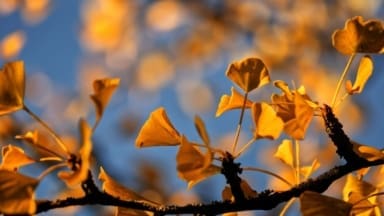
The Mayors for Peace organisation is behind the project and has worked closely with Hiroshima and Nagasaki to distribute seeds from survivor (hibaku) trees. To date, they have distributed seeds and seedlings to 88 cities outside of Japan from eight species of hibaku trees: ginkgo (Ginkgo biloba), Chinese parasol trees (Firmiana simplex), Camphora (Camphora officinarum), Kurogane holly (Ilex rotunda), Japanese hackberry (Celtis jessoensis), muku (Aphananthe aspera), persimmon (Diospyros kaki) and Jujube (Ziziphus jujuba).
In August 1945, Hiroshima’s ginkgo trees had been in full leaf. The bomb left their leaves burned, their branches stripped away and bark scorched. Despite this, the insides of the trees survived:
“Less than a year after the destruction, spring had pushed up a green shoot through the A-bomb desert where rumour held that nothing would grow for 75 years. The powerful emotions stirred by a little sign of life would be hard for anyone [to understand] who is not a hibakusha (an A-bomb survivor) or a Hiroshima resident. Our expressions brightened our steps quickened, in response to more than the seasonal change.” explained Shinzo Hamai, the first Mayor of Hiroshima after the atomic bombing, reflecting on the role of survivor trees as a symbol of the city’s resilience.
The seeds have been through stratification process and sown at the Oxford Botanic Garden. Once the saplings have developed, some are to be planted in the Botanic Garden and others distributed across the city.

